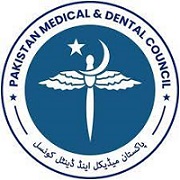IMPACT OF SURGERY ON QUALITY OF LIFE (QoL) IN PATIENTS WITH STRUCTURAL HEART DISEASE
Abstract
Background: Structural heart disease is one of the most commonly occurring congenital disorders with about 0.8% - 1.2% of live births worldwide Despite the tremendous progress in field of cardiology, majority of this growing population with CHD even after the surgery continue to face life-long challenges and are at risk for having a poor (QoL).
Objectives: To evaluate the impact of surgery on QoL in patients with structural heart disease.
Materials: This Quasi experimental study was conducted in Rawalpindi Institute of Cardiology Rawalpindi. From July 2019 to June 2020. We included 76 children and adolescents of both genders with one of their parents after consent. Demographic and clinical data was recorded on the preset Performa. The QoL was accessed by using Urdu version of World Health Organization Quality of Life Brief Version (WHOQOL-BREF) before and one month after surgery. Data was analyzed on SPSS 20 and p value of<0.05 was taken as significant.
Results: The mean age of participant (n=76) children and adolescents is 14.5 (14.5 ± 3.3) years. Out of total, 52.6% were females while 47.4% were males. Most of the patients had VSD, 26(34 .2%) followed by TOF 12(15 .7%) and ASD 9(11 .2%). Valvular heart disease (Mitral, Aortic) was found in 8 (10. 5%) and 5(6 .5%) cases respectively the individual parameters of WHO QoL scale were compared in pre- and post-surgical period. Further the parameters of WHO QOL scale were divided into sub categories of physical health, psychological wellbeing, social interaction and environmental health for analysis. Results revealed that physical health, psychological wellbeing, social interaction and environmental health all considerably improved in the post intervention period (p value 0.008, <0.001, <0.001 and 0.001 respectively). The overall QoL of patients also improved significantly (p value 0 .001).
Conclusion: There was significant improvement in physical health, psychological wellbeing, social interaction and environmental health in the post intervention period. Overall QoL in the postoperative period was also improved.






